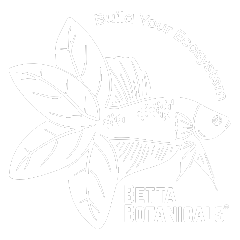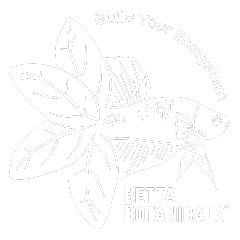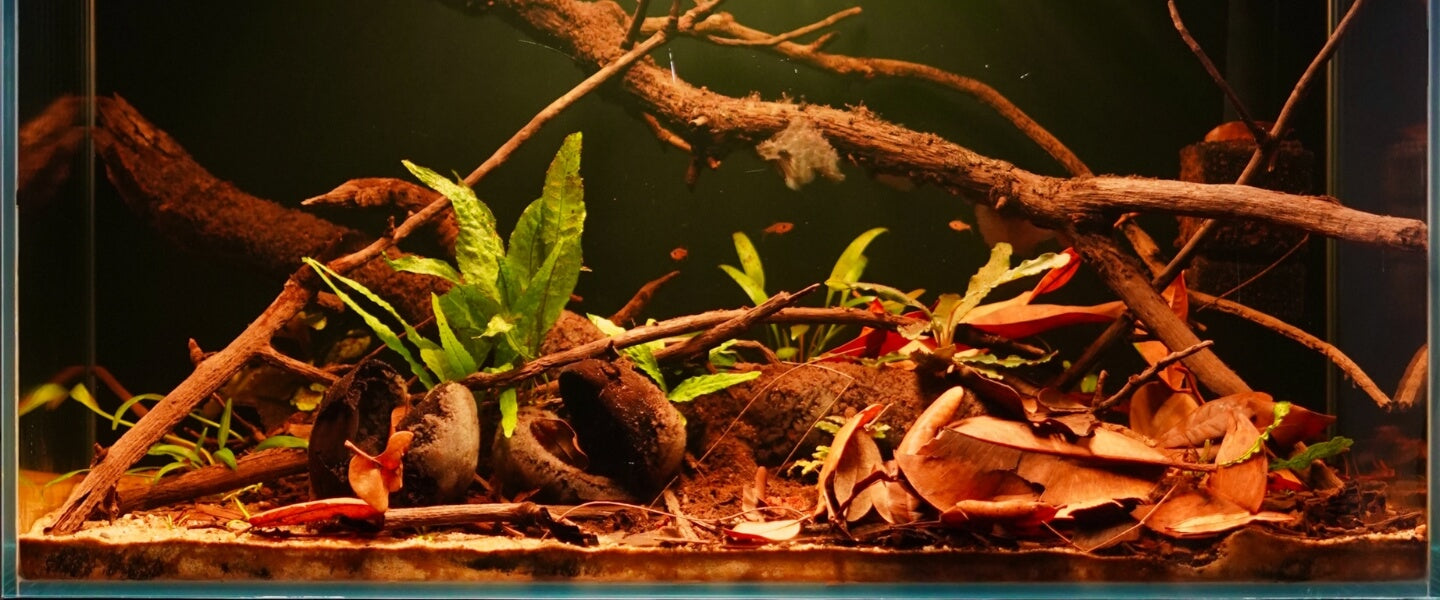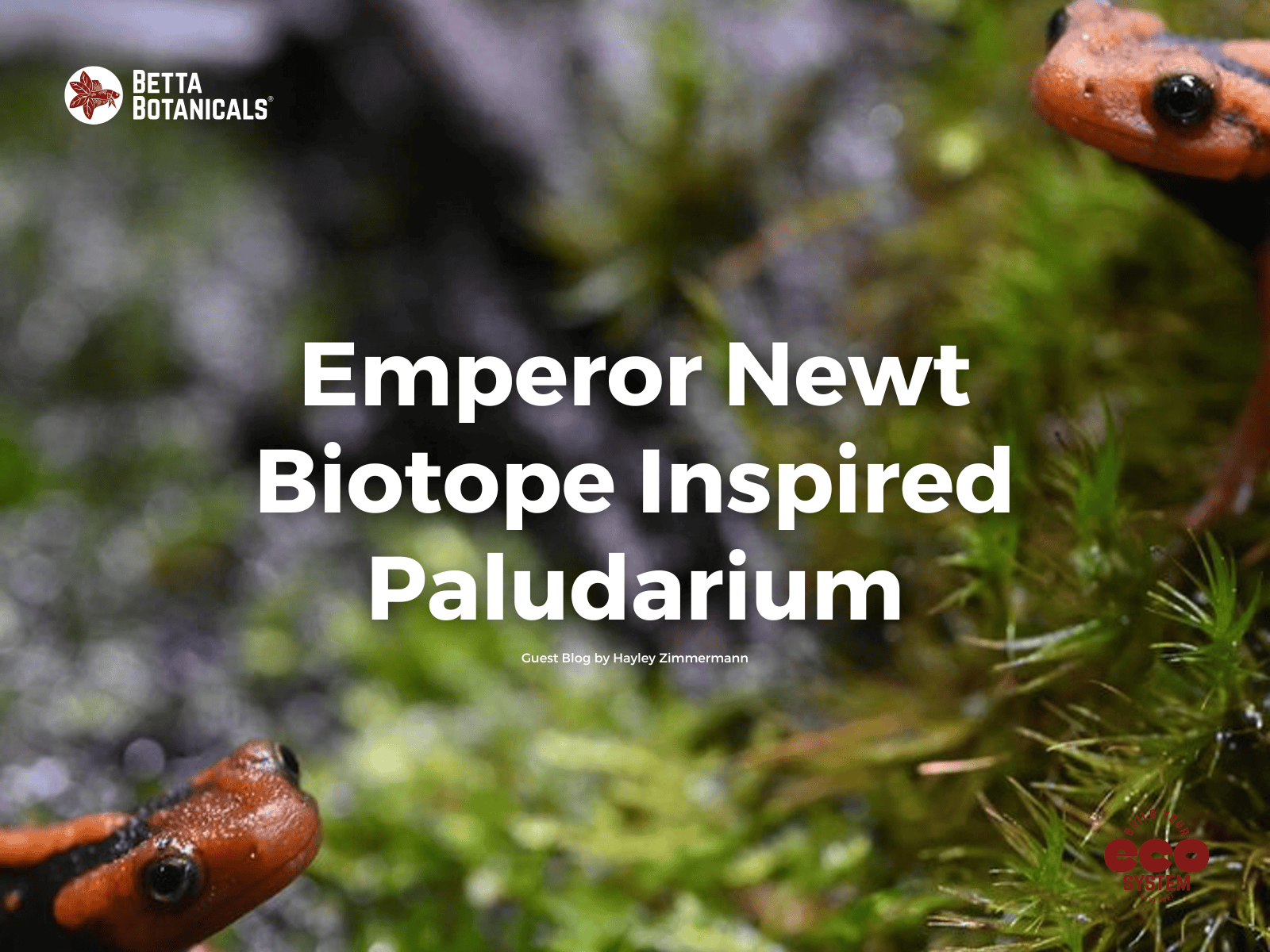A Botanical Method Aquarium How To: Substrates You Can't Buy At The Store

An example of the types of substrates you can create with a more naturalistic approach.
Back to the Basics of Aquarium Substrate
Just like temperate climates, tropical regions have seasonal variations of wet and dry with periods where fishes habitats accumulate leaves, seed pods, and woody debris. Once the rains return and water levels rise, these materials can create new habitats as well as food and/or nutrient sources for aquatic life. These flooded habitats quite the diverse look and feel when contrasted with your standard aquarium sands and gravels. When it comes to substrates, there is nothing wrong with using play sand and calling it a day. I have seen many successful botanical aquariums that use just a layer of sand and call it a day. There is however a different approach you could take, one that harbors numerous extra benefits for your ecosystem. It requires a little more thought, time, and planning but the result is well worth it. Your substrate will be livelier (literally) and more complex due to the additions of sands or gravels, clays, soils, and other botanicals. A substrate that functions almost like a living organism, a substrate that filters as well as feeds your aquarium. Your new substrate not only looks natural but will function much the same as a substrate found in the wild. This article will explain the whole world of naturalistic substrates with an emphasis on botanical method aquariums as well as building your ecosystem from the substrate up.

A quick glance would make it hard to separate wild habitats from a tank with using naturalistic substrates.
Creating Natural & Living Aquarium Substrate
I always think that the most important aspect of setting up any aquarium is obtaining as much information as possible about an area. Building a naturalistic substrate is a huge step in the long-term success of a botanical aquarium which has recently been gaining traction. Creating naturalistic, organic-comprised, substrates only takes a couple of extra steps as opposed to just dumping cosmetic sand and calling it a day. Nothing is wrong with just using cosmetic sand, but there are so many additional benefits to creating a more holistic substrate that will not only function as a source of supplemental food and filtration but also make your aquarium look more like your fishes natural habitat. The biggest thing about naturalistic substrates is mixing different substrate mediums together, whether it be sand or gravel grades, soils, and/or botanicals. In many wild habitats, the substrate has a variety of mixed grades. The most naturalistic botanical method substrate would be to blend up some leaves or roots and mix those into the substrate, now we are starting to get an active substrate that fuels the base of botanical aquariums. If your desired habitat features more sediments, then adding in soils, clays, and other organics to your mix can take your mix one step closer. Many of these additives help influence the local water chemistry of the system and are what your fishes evolved to live in.
Blended botanicals and other organics can play a functional role in the establishment of a macrofaunal food web. These collections of bacteria, protists, worms, and other crustaceans feed off the botanicals and detritus. These additions of botanicals to the substrate serve as the place of nourishment and biological filtration, a layer of the food web not often seen in aquarium that only use playsand or conventional substrates. I will also once again stress the addition of macrofauna and letting the tank as a whole settle for a few weeks after the cycle is complete. I know staring at an empty tank is hard, but the benefits of establishing the supplemental microfaunal populations are essential in my mind.

Trying small sample testing before full aquarium use with livestock is recommended.
After conducting some research and collecting the materials for your new naturalistic substrate you may want to just mix all the elements together, fill the tank up, and wait. While this can be done, it would be recommended to test substrate mixes before livestock introductions and maybe even before large-scale mixing. Mainly to test the water chemistry and how the new mix will affect the water parameters. It's important to test for KH and pH so see how the water chemistry is impacted from the materials you have chosen, and I like to use my API Test Kit or my Hannah pH probe and LaMotte KH test Kit. This way you can also learn how the substrate will also interact with the water. Most substrates that include terrestrial elements like soils will have a longer cloudy period due to these elements getting kicked up into the water column. There will also be more suspended bacteria feeding off all the new botanical additions if those are added to the water. Just a word of wisdom to test on the small scale, just like you should if you collect your own botanicals.

Nature does not have a set “method” and is full of chaos as well as balance.
Precautions for Plants & Detritus When Blending a DIY Substrate
Sometimes you also want to include some plants in your botanical setup, either because they are found in your fishes habitat or because you just like plants and their benefits. It may be tempting to toss in some mainstream planted tank substrate and capping that with sand/botanicals to give a food source for your plants. Keep in mind that this is a great idea for the plants, but not for the tannin levels of your aquarium. There have been known cases that clay pellet aquasoil will suck up tannins from the water column and lead to tannins disappearing, sometimes overnight, depending on the amount of aquasoil used. My fix for this issue would be fertilizers like 2HR Aquarist’s APT 1 Zero liquid fertilizer and APT Jazz for root tabs. These will still supply nutrients needed for plants while also helping keep tannin levels present.

Cloudy water can sometimes be alarming, but it is 100% natural and expected with sediments in your substates.
Another more natural fertilizer you can use is the ever-building detritus that accumulates in your botanical tanks. Not only is detritus the “glue” of the substrate, but of the whole ecosystem. Bacteria and microfauna will help slowly assimilate leftover nutrients back into the substrate from detritus, breaking it down through consumption. So once again, DO NOT siphon or disturb this layer.
Doing so will cause imbalances throughout your whole ecosystem, I could compare the removal of detritus to the removal of leaves in your yard or converting grasslands to monoculture grass lawns. If you watch your botanical tank enough you will see fishes picking through the detritus between feedings. They do this because some fish have been scientifically proven to consume significant amounts of detritus in the wild, some even relying heavily on the detritus itself as a food source. Cyprinids aka rasboras, barbs, and danios have been shown to consume ample amounts of detritus. It is also safe to assume many characins (tetras), catfishes, and loaches also will consume some detritus as supplemental food sources. Especially when fishes gulp for foods near the substrate, detritus by proxy will be consumed. So please, leave the detritus and try not to disrupt the layer if you can as your fishes, bacteria, and macrofauna will thank you.

You can start to see some anoxic pockets forming along the bottom and right corner of the substrate.
Deep Substrates and Anoxic Conditions in the Aquarium
Sulfur/anoxic gas buildup is rarely an issue, but highly feared in the aquarium hobby. Unless you have poor husbandry methods like overfeeding/overstocking, poor water flow, or lacking consistent water change routines, or if you fail to follow preparation methods like adding tons of botanicals too quickly at one time. you usually will not have a problem avoiding the downsides of an anoxic substrate. Deep substrates are found all over the world, so why not try out a deep sand bed for yourself? These sand beds are not as scary as they are sometimes coped out to be, much like detritus. In fact, having a thicker substrate will provide a whole new matrix for macrofauna as well as anaerobic bacteria that will aid in additional filtration. So do not be alarmed by thick beds of leaf litter or sand. Both are natural and come with their own unique qualities. Deeper substrates create new habitats for organisms known as anoxic organisms. These microfauna can help oxidize non-soluble compounds to gain oxygen for themselves. The most common example is Nitrate (NO₃) being converted to Nitrogen gas which is sometimes confused with Ammonia or Sulfur gas bubbles. The main cause of Ammonia or Sulfur build-up is stagnant water conditions with lots of rotting, live, organics, botanicals do not fall under rotting live organics as they are devoid of measurable sugars. You may notice a distinct dark layer in your sand and that is the anoxic layer, like detritus, try not to mess with this later. This is a part of the natural functions which should be left to do what they are intended to do.

A recent alternative-type substrate that I created composed of crushed leaves, coir, & cutch bark.
Alternative Substrates To Use In Blackwater, Biotope, and Botanical Aquariums
If you want some new ideas or maybe a challenge, then let me introduce a few options that are not that widely used:
Sticks & Twigs Only Substrate
Much like a snag found in rivers or streams, the idea of using a twigs-based substrate is a fascinating idea. Not only will the twigs look cool in a mass collection, but there will also be a matrix of places for fishes and macrofauna to live, breed, and forage. Some of the best twigs to use would be Oak because of the tinting abilities which again is just another benefit to this idea. Thinner twigs like honeysuckle and hazelnut are also idea. If you live near an unpolluted forest, you can look for oaks, sycamores, alders, or birch. Make sure to use naturally fallen twigs that have not started to rot.
Leaf Litter Only Aquarium Substrates
This idea is very common in seasonal tropical regions of the world. This is as simple as it sounds, but caution needs to be used to slowly build up the leaf-litter bed. In the wild, some leaf litter beds can be meters deep which may not be possible in aquariums, but a couple-inch deep sand bed could be achieved. A base of larger more robust leaves like Magnolia followed by smaller leaves like Willow, Shingle, or Live oak can be included. If you wanted to go even more tropical then some Mangrove, Guava, Jackfruit, and Jambola could really give a nice look.
Peat as an Aquarium Substrate
Peat swamps can be found all over the world, but our favorites are in Southeast Asia and are ubiquitous with many of the wild betta species collected in the area. These swamps are known for their dark-stained waters and super low pH values (>3.0). Lots of wild betta breeders will utilize peat moss as a substrate to replicate the low pH found in the betta’s wild habitats. Using peat has been a growing controversy due to the environmental impact of harvesting peat, so finding a sustainable source that replenishes what they harvest is ideal if you find that using peat moss is your only option. My alternative would be blending Macaranga leaves which drop the pH, and adding it to alder cones, cutch bark, or coco coir to get the same look.
About the Author: Meet Calvin Darling, a Botanical Aquarium Enthusiast
About Me: Hello blog readers, my name is Calvin Darling, and I am a member of the #TanninBae Ambassador program with Betta Botanicals. I have been keeping aquariums since I was 4 years old but have been keeping botanical method aquariums for the past three years. I specialize in biotope-inspired aquariums with an emphasis on inconspicuously colored fish and uncommonly kept livestock as well as root tangle scapes. My go-to botanicals must be Live oak, Shingle oak, Mokha pods, Parviflora pods, and Melastoma roots.









Inspire your friends:
Little Bugs In My Fish Tank: Microfauna of The Botanical Method Aquarium
Celebrating Diversity and Supporting LGBTQ+ Youth with Betta Botanicals' 2024 Pride Pack
1 comment
Could you share an example of a substrate mix that you have used